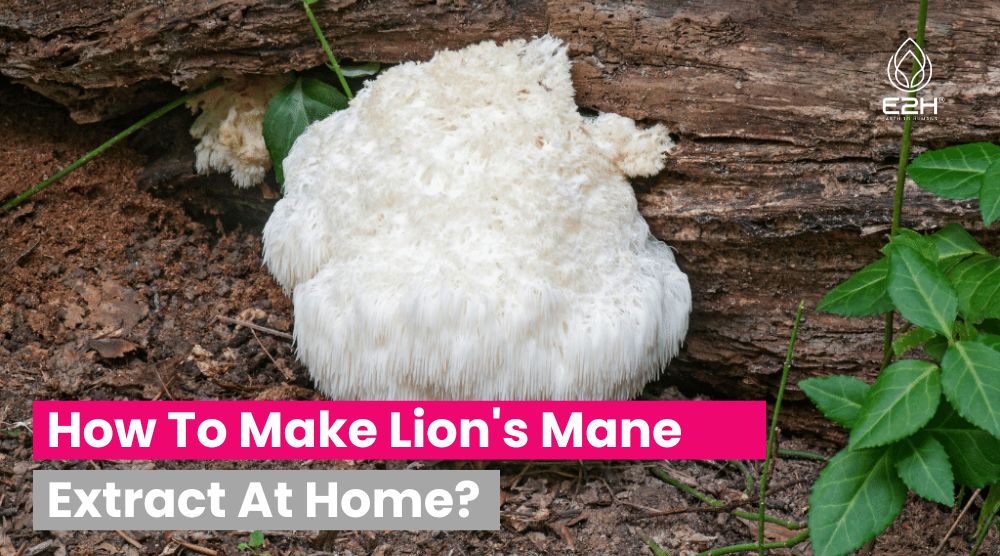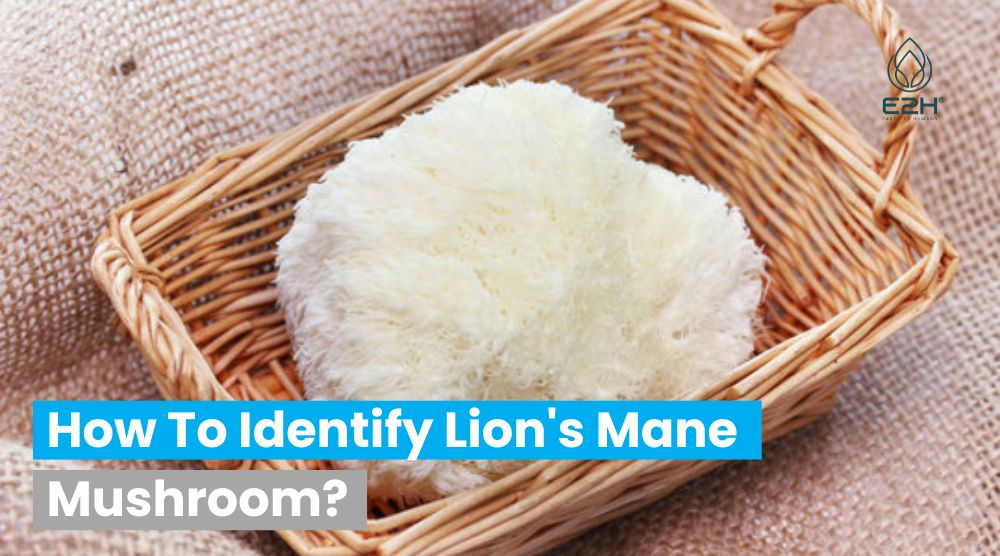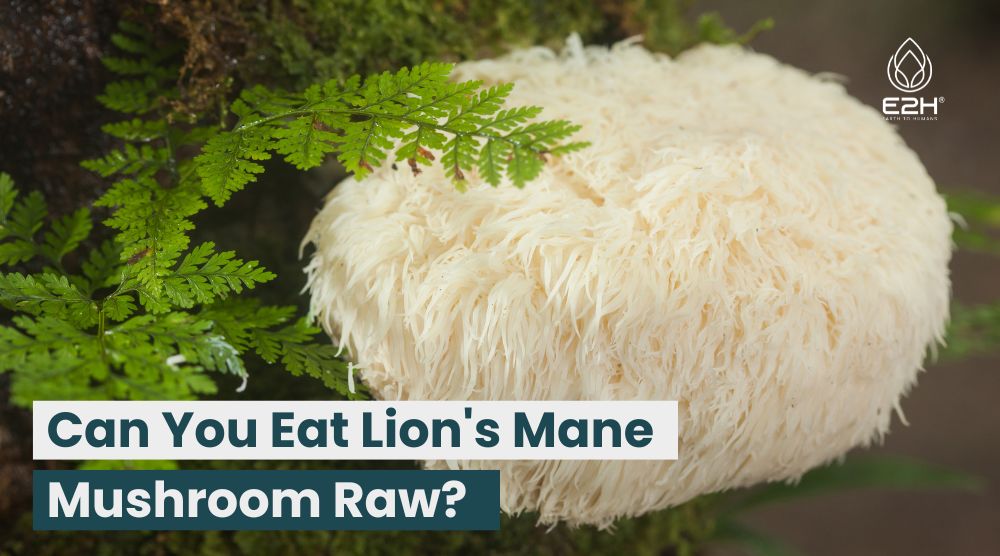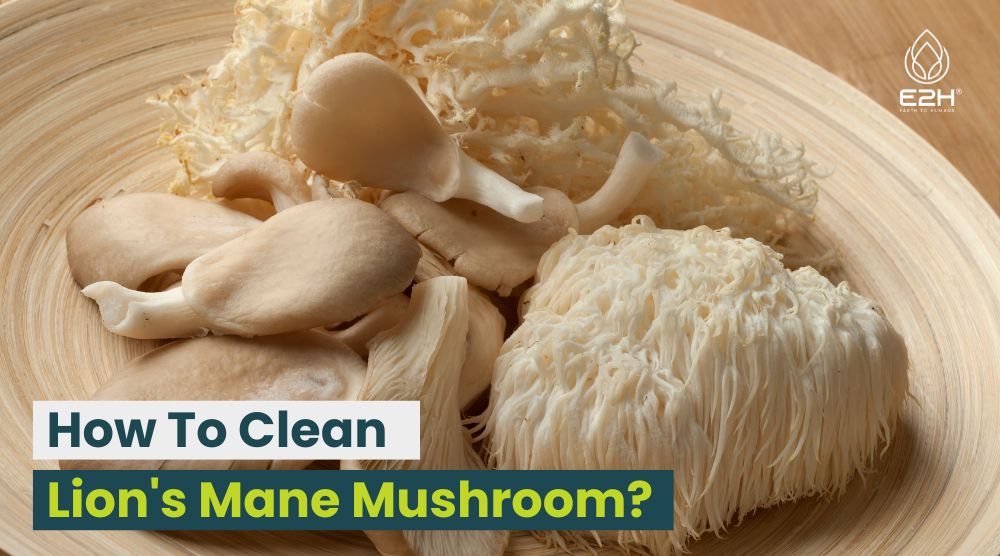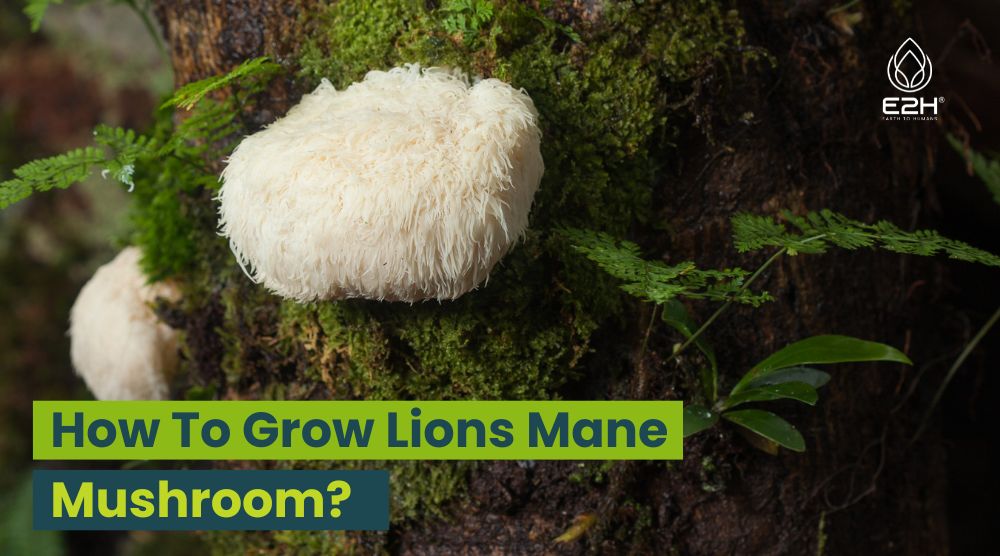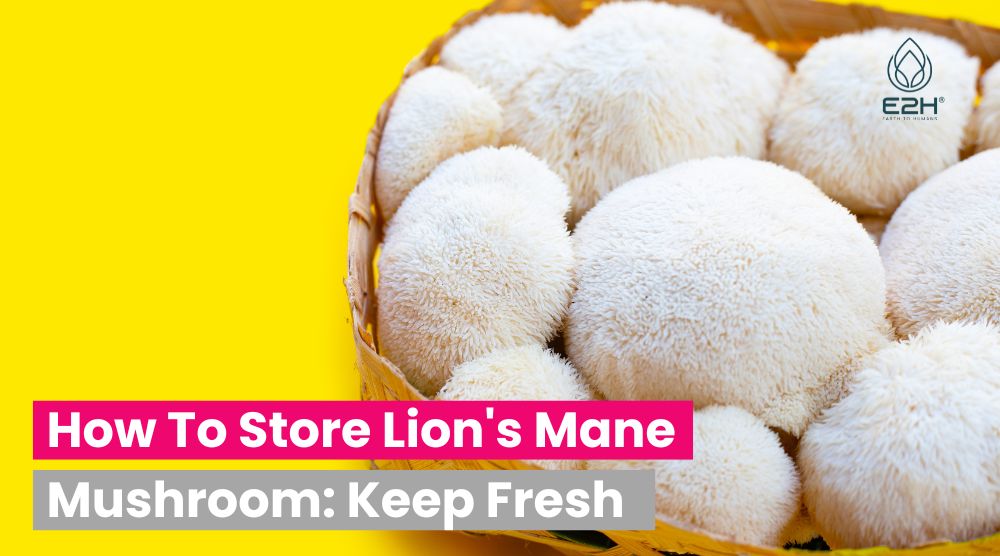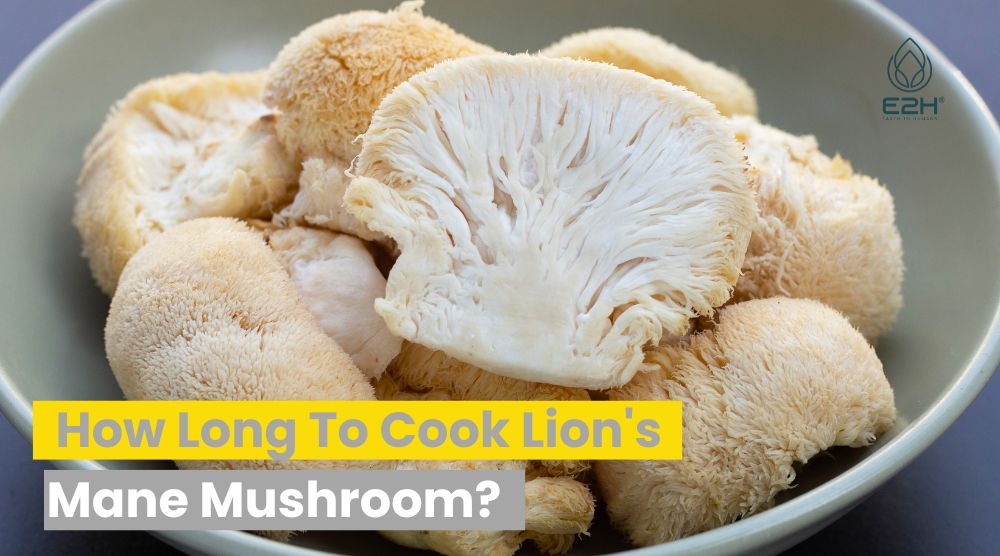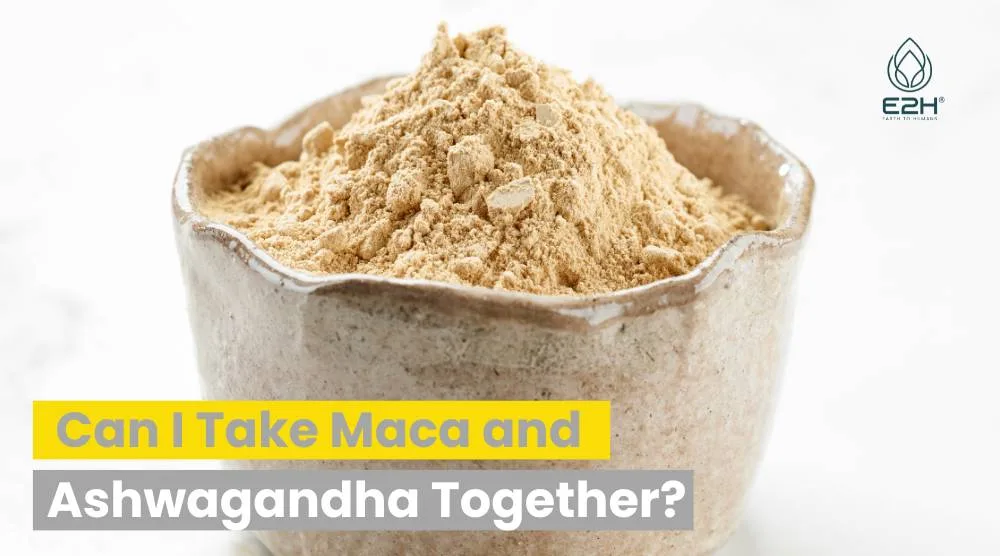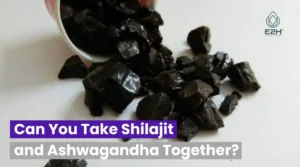How to make lion’s mane extract at home: To make lion’s mane extract at home, simmer dried lion’s mane mushrooms in water for several hours, then strain the liquid. Optionally, reduce the liquid further until desired concentration is achieved.
What is Lion’s Mane?
Before we delve into the process of making lion’s mane extract, let’s first understand what lion’s mane is. Lion’s mane is a unique mushroom that resembles a lion’s mane, hence its name. It has been used in traditional Chinese medicine for centuries due to its potential medicinal properties. Lion’s mane contains bioactive compounds such as polysaccharides, beta-glucans, and hericenones, which are believed to contribute to its health benefits. Lion’s Mane mushroom is popular in Asia, especially in China and Japan, due to its culinary uses and traditional medicinal properties.
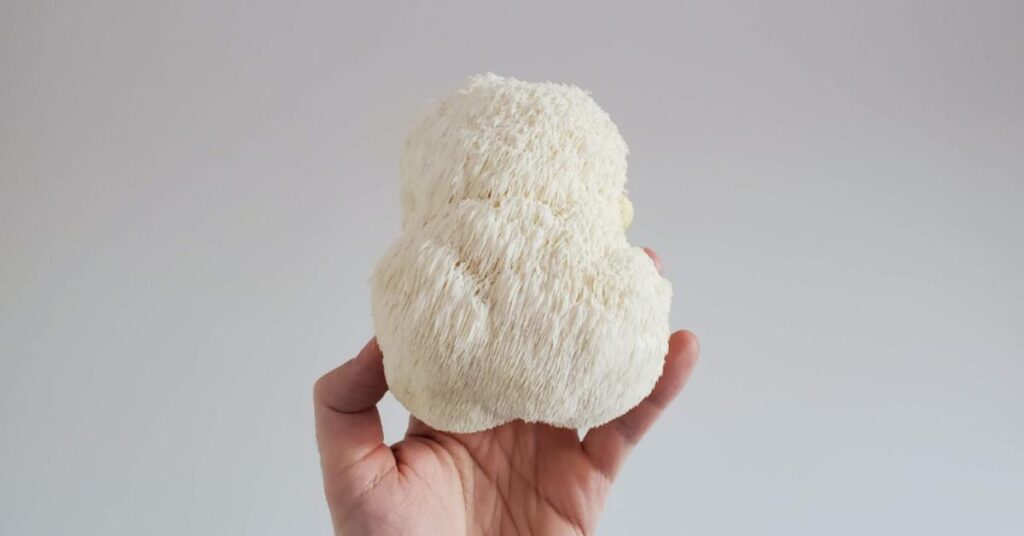
Health Benefits of Lion’s Mane Extract
Lion’s mane extract is renowned for its potential health benefits. Here are some of the key advantages associated with this natural remedy:
- Enhances Brain Function: Lion’s mane extract has been linked to improved cognitive function and memory. It may help protect against age-related cognitive decline and support overall brain health.
- Promotes Nerve Growth: Lion’s mane extract contains compounds that stimulate the growth and repair of nerve cells. This makes it a promising natural remedy for those suffering from neurological conditions like Alzheimer’s and Parkinson’s disease.
- Boosts Immune System: The bioactive compounds in lion’s mane extract have immune-boosting properties. Regular consumption may help strengthen your immune system, making you less susceptible to infections.
- Reduces Inflammation: Lion’s mane extract possesses anti-inflammatory properties, which can help alleviate symptoms associated with inflammatory conditions like arthritis.
- Supports Digestive Health: Lion’s mane extract has been shown to promote digestive health by enhancing the growth of beneficial gut bacteria and reducing inflammation in the digestive tract.
Gathering the Ingredients and Tools
Before you embark on making lion’s mane extract, ensure you have the following ingredients and tools:
Ingredients:
- Fresh or dried lion’s mane mushrooms
- High-proof alcohol (such as vodka or grain alcohol)
- Distilled water
Tools:
- Airtight glass jar
- Cheesecloth or coffee filter
- Funnel
- Dark glass bottles for storage
Step-by-Step Guide to Making Lion’s Mane Extract
Follow these steps to make your own lion’s mane water extract, at home:
Step 1: Prepare the Lion’s Mane Mushrooms
If using fresh lion’s mane mushrooms, clean them thoroughly and remove any dirt or debris. If using dried mushrooms, rehydrate them according to the package instructions.
Step 2: Chop or Blend the Mushrooms
Chop the lion’s mane mushrooms into small pieces or use a blender to create a fine powder. This will increase the surface area and aid in the extraction process.
Step 3: Prepare the Alcohol Solution
In an airtight glass jar, combine the chopped or blended lion’s mane mushrooms with the high-proof alcohol. Ensure that the mushrooms are fully submerged in the alcohol.
Step 4: Infuse the Mixture
Seal the glass jar tightly and store it in a cool, dark place for at least four weeks. During this time, shake the jar gently every few days to facilitate the extraction process.
Step 5: Strain the Mixture
After four weeks, strain the mixture using a cheesecloth or coffee filter. Squeeze out as much liquid as possible.
Step 6: Dilute with Distilled Water
Add distilled water to the extracted liquid to dilute it to your desired concentration. The ratio of alcohol to water will depend on your preference.
Step 7: Store in Dark Glass Bottles
Transfer the lion’s mane extract into dark glass bottles using a funnel. Store the bottles in a cool, dark place to maintain the potency of the extract.
Storing and Using Lion’s Mane Extract
To ensure the longevity and efficacy of your lion’s mane extract, follow these storage and usage guidelines:
- Storage: Keep the dark glass bottles tightly sealed and store them in a cool, dark place. Avoid exposure to direct sunlight or high temperatures, as this may degrade the potency of the extract.
- Usage: Start with a small dosage and gradually increase it to assess your tolerance and desired effects. Lion’s mane extract can be consumed directly or added to your favorite beverages or recipes.
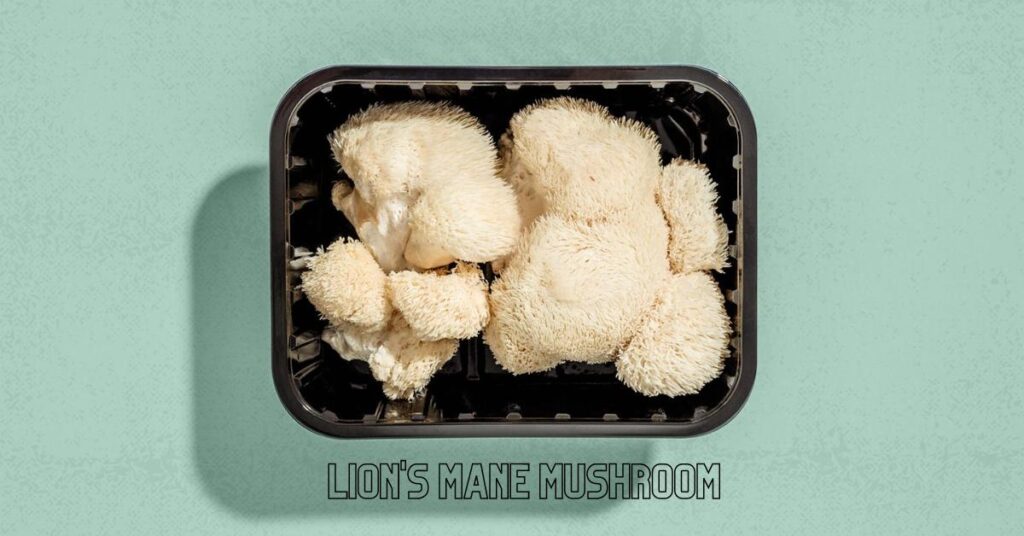
Safety Precautions and Side Effects
While lion’s mane mushroom extract is generally safe for consumption, it’s essential to take certain precautions and be aware of potential side effects:
- Allergies: Some individuals may be allergic to mushrooms. If you have a known mushroom allergy, it’s best to avoid lion’s mane extract.
- Digestive Upset: In rare cases, lion’s mane extract may cause digestive discomfort such as diarrhea, stomach cramps, or bloating. If you experience any adverse effects, discontinue use and consult a healthcare professional.
- Interaction with Medications: If you’re taking any medications, consult your healthcare provider before incorporating lion’s mane extract into your routine, as it may interact with certain medications.
What is the best extraction method for lion’s mane mushroom?
The best extraction method for lion’s mane depends on personal preference and the desired concentration of the extract. The most common methods include alcohol extraction, hot water extraction, and dual extraction. Alcohol extraction using high-proof alcohol is popular for its ability to extract a wide range of bioactive compounds.
Hot water extraction is effective in extracting the polysaccharides present in lion’s mane. Dual extraction combines both alcohol and hot water extraction methods to extract a broader spectrum of medicinal compounds. Ultimately, the best extraction method is one that suits your needs and ensures a potent and high-quality lion’s mane extract.
Does cooking Lion’s Mane destroy nutrients?
Cooking lion’s mane mushrooms does not necessarily destroy all the nutrients, but it can alter their levels. Like most mushrooms, lion’s mane contains heat-sensitive compounds that may be partially degraded during cooking. However, many nutrients, including vitamins, minerals, and antioxidants, can withstand cooking at moderate temperatures without significant loss. To retain the maximum nutritional value, it’s best to cook lion’s mane and other medicinal mushrooms by using gentle methods like sautéing or steaming rather than high-heat techniques such as deep-frying.
Are lion’s mane powder and extract the same?
Lion’s mane mushroom powder, and extract are not the same, although they are derived from the same mushroom. Lion’s mane powder is made by grinding dried lion’s mane mushrooms into a fine powder. It retains the natural composition of the whole mushroom and contains various nutrients and bioactive compounds.
On the other hand, lion’s mane extract is a concentrated form obtained by extracting specific compounds from the mushroom using solvents like alcohol or hot water. The extract typically contains higher levels of targeted bioactive compounds, making it more potent than the powder.
Can I make a tincture with Lion’s Mane powder?
Yes, you can make a tincture with lion’s mane powder. To do so, combine the lion’s mane mushrooms powder with a high-proof alcohol like vodka or grain alcohol. The alcohol acts as a solvent and extracts the beneficial compounds from the powder. Place the mixture in an airtight glass jar and let it infuse for several weeks, shaking it occasionally. After the extraction period, strain the mixture using a cheesecloth or coffee filter to remove any solid particles. The resulting liquid is your lion’s mane tincture, which can be consumed orally or added to beverages as desired.
What is the process for making a mushroom tincture at home?
Making a mushroom tincture at home involves a few simple steps. Start by gathering your preferred medicinal mushrooms, such as reishi, chaga, or other turkey tail mushrooms. Chop the mushrooms into small pieces and place them in a glass jar. Next, cover the mushrooms with a high-proof alcohol, such as vodka or grain alcohol, ensuring they are fully submerged.
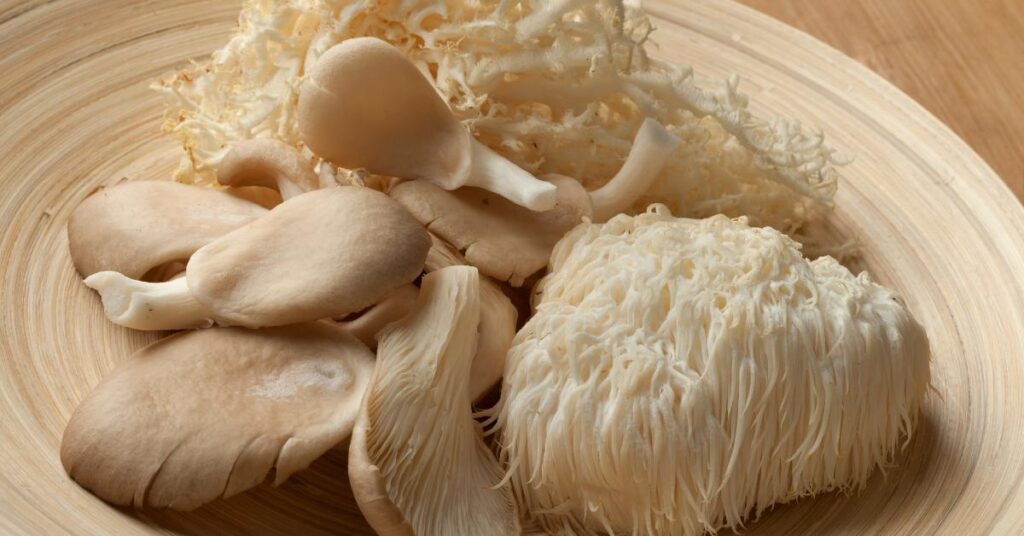
Seal the jar tightly and store it in a cool, dark place for at least 4-6 weeks, shaking it occasionally. After the steeping period, strain the tincture using a cheesecloth or fine mesh strainer, and store the liquid in amber glass bottles. Label your tincture with the mushroom name and date of preparation for future use.
How are medicinal mushroom tincture prepared and extracted?
Medicinal mushroom tinctures are prepared through a process called extraction, which involves extracting the bioactive compounds from the mushrooms using alcohol as a solvent. This method allows for the concentration and preservation of the mushrooms’ medicinal properties. To extract the beneficial compounds, the mushrooms are typically chopped or ground into smaller pieces to increase their surface area.
Then, they are combined with a high-proof alcohol, such as ethanol or vodka, in a glass jar. The mixture is left to steep for several weeks, allowing the alcohol to dissolve the active constituents of fresh mushrooms. After the steeping period, the liquid is strained and stored in dark glass bottles, ready for use as a potent medicinal tincture.
How to Make a Lion’s Mane Tincture (super easy)
FAQs
Can I use dried lion’s mane mushrooms instead of fresh ones?
Yes, you can use dried lion’s mane mushrooms to make the extract. Just make sure to rehydrate them according to the package instructions before proceeding.
How long does homemade lion’s mane extract last?
When stored properly in a cool, dark place, homemade lion’s mane extract can last up to a year. However, its potency may gradually decrease over time.
Can lion’s mane extract be used topically?
While lion’s mane mushroom extract is primarily consumed orally, it can also be used topically. Some people apply it to their skin or incorporate it into homemade skincare products for potential benefits.
Can I combine lion’s mane extract with other herbal extracts?
Yes, you can combine lion’s mane extract with other herbal extracts to create personalized blends. However, it’s advisable to research potential interactions and consult a healthcare professional if you have any concerns.
Can children consume lion’s mane extract?
While lion’s mane extract is generally considered safe, it’s best to consult a pediatrician before giving it to children, especially in larger doses.
Conclusion
Making lion’s mane extract at home is a rewarding and cost-effective way to harness the potential health benefits of this incredible mushroom. By following the step-by-step guide provided in this article, you can create your own lion’s mane extract and incorporate it into your wellness routine. Remember to store it properly and use it responsibly. Enjoy the benefits of lion’s mane extract and embrace the wonders of natural remedies.
